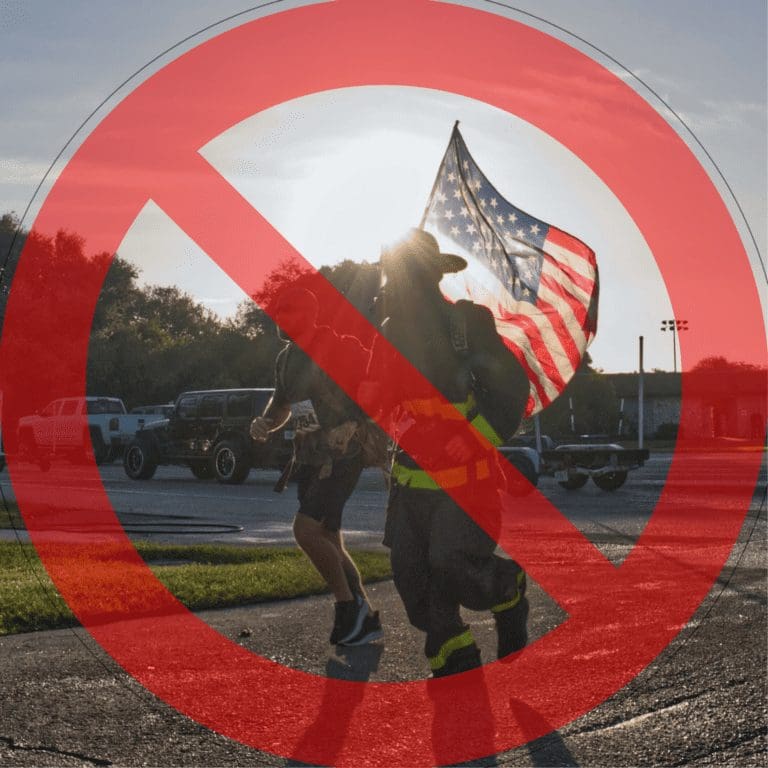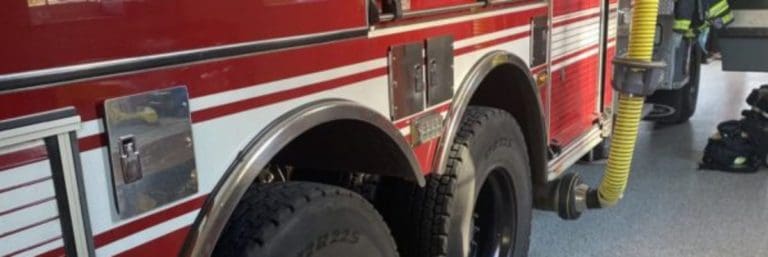How Do Firefighters Identify Hazardous Materials
As I am sitting here in the day room, watching some WW2 movies, I was surfing reddit and quora forums looking at what kind of questions people have out there. One question that stood out to me was in regards to hazardous materials (hazmat) spills or leaks is how first responders are able to identify exactly what they are dealing with. This is important stuff to know, because you can find yourself in a bad situation. So how do firefighters and other first responders know what hazardous material they are dealing with?
Firefighters and first responders know what hazardous material they are dealing with because they will either use an Emergency Response Guide (ERG) or if in a structure, they can detect what is in the atmosphere using a 4 gas meter. Knowing what hazardous material you are dealing with, will also dictate the type of isolation technique you will be using to contain the material to prevent further spread. Let’s go a bit deeper in each of these.
Hazmat spills/leaks can happen just about anywhere. They occur on highways, country roads, airplanes, boats, and just about anywhere.
It is easy to assume that you can walk through or even drive through hazmat leaks that are in vapor form. Check out this video below, about a police officer who attempted to go through a plume of hazardous gas.
Although the vapor may seem harmless, some vapors pose a major risk to your respiratory system.
Emergency Response Guide
The emergency response guide is an important tool for every first responder, because it is a short and sweet guide to the name of the hazardous material, if you do not have a name, the identifier will reveal it. So what I am going to do is show you in detail the ERG.
Yellow Section

Just about every single hazardous material container, there is always a rectangular placard with 4 different colored squares indicating things like, flammability, toxicity, environmental hazards and more.

On these placards there is always a 4 digit number. This four digit number can be found in the yellow section of the guide. The number corresponds with the hazardous material it is registered under. So a diesel or gasoline tanker may have a number of 1203 (next time you see a gas tanker on the highway, see if you see this number on it). This is very common and is usually the same for diesel fuels.
Blue Section

The blue section is essentially the inverse of the yellow section. If there is a material spill where there is no placard visible to see the designation numbers, but there are documents such as a bill of lading on a semi truck, that would give us a name of the chemicals onboard.
Orange Section

Now the orange section is going to give us some very important information in regards to what we’re dealing with. The orange section will tell us things like water solubility, weight compared to air or water, and isolation and evacuation information.
Why is this information important?
Well let’s take something like rubbing alcohol for example. Alcohol will mix itself with water, so it would be very hard to sift that out if the spill got into a water supply. If the hazardous material does not mix with water but it is heavier than water, that means it’ll sink to the bottom of the water source.
One very common misconception that I personally have had myself for many years is about propane. If you release propane into the air, it does NOT float up and away. Propane is heavier than air, so it will settle itself at the lowest possible location.
So if you leaked propane in a basement, and opened a window that is about ground level in order to try and air out the basement, there is a very good chance that there is a lot of propane remaining in that basement.
Green Section

Now the green section is an extension of the evacuation and isolation section of the orange section. This is very important because it gives you the exact distances you will need if you are downwind, and how far to evacuate in all directions.
If you are able to see in the picture above, you may be able to see that there is a section for daytime isolation distances, as well as nighttime isolation distances.
The reason there is a difference is because at night, you are likely not to be able to see the hazardous material in the dark. So to be safe, the distances are increased to eliminate the possibility of coming in contact with the material during low visibility and lack of light.
This section also addresses and adjusts isolation distances and evacuation distances if it is a big spill or a small spill.
Isolation Methods
Let’s say you are in a municipal fire department, and you have an interstate within your department’s jurisdiction. Your crew gets toned out for an overturned tanker spilling something on the highway.
This is already going to involve many units, both fire, ems & law enforcement. Typically in every engine or truck, there is a pair of binoculars by the officer’s seat. This is there in order to see that hazardous materials placard from a safe distance upwind from the spill or release.
Your officer identifies the material to be gasoline, besides evacuation and blocking the highway, which law enforcement are likely to assist with, how are you going to contain the spilled material from getting into storm drains, grass or spread anywhere else?
There are usually about 9 different ways that firefighters and first responders at the hazmat awareness level will contain the material. I’m going to give you the definitions as written in Fundamentals of Firefighting & Hazardous Materials Response by Jones & Bartlett Learning.
Absorption/Adsorption
“Absorption is the process whereby a spongy material (e.g., soil or loose absorbents such as vermiculite, clay, or peat moss) or specially designed spill pads are used to soak up a liquid hazardous material.” Same way oil dry is used to pick up oil off of flat surfaces. Once the Oil-Dri absorbs the oil, it is disposed of properly.
Adsorption is kinda the opposite. Adsorption is defined as. “ In adsorption, the contaminant adheres to the surface of an added material—such as silica or activated carbon—rather than combining with it (as in absorption)”
Damming
Damming involves when a water source has been contaminated. Damming is defined as “a containment technique that is used when liquid is flowing in a natural channel or depression and its progress can be stopped by blocking the channel.”
Diking
“Diking is the placement of a selected material such as sand, dirt, loose absorbent, or concrete to form a barrier that will keep a hazardous material (in liquid form) from entering an unwanted area or to hold the material in a specific location.”
Think of it like wanting to stop a large spill of juice on a table. In order to avoid an even larger mess, you might get some paper towels to keep the juice on the table and off the floor, while the paper towel absorbs the juice.
Dilution
“Dilution is the addition of water or another substance to weaken the strength or concentration of a hazardous material (typically corrosive). Dilution can be used only when the identity and properties of the hazardous material are known with certainty.”
Some considerations when diluting a hazardous substance is the amount of water that is actually needed in order to weaken the strength of the substance. You will also need to consider the containment measures currently being used, and if it will be overwhelmed with dilution.
Diversion
“Diversion techniques in general are intended to redirect the flow of a liquid away from an endangered area to an area where it will have less impact.
In many cases, however, responders do not need to build elaborate dikes to divert the flow of a spilled liquid. Instead, existing barriers—such as curbs or the curvature of the roadway—may be effective structures to divert liquids away from storm drains or other unwanted destinations. “
Retention
“Retention is the process of creating a defined area to hold hazardous materials. For instance, it may involve digging a depression in the ground and allowing material to pool in the depression.
The material is then held there until a clean-up contractor can recover it. In some cases, some sort of diversion technique may be required to guide the spilled liquid into the retention basin.
As an example, a city’s public works department or an independent contractor might use a backhoe to create a retention area for runoff at a safe downhill distance from the release.”
Remote Valve Shutoff
“Retention is the process of creating a defined area to hold hazardous materials. For instance, it may involve digging a depression in the ground and allowing material to pool in the depression. The material is then held there until a clean-up contractor can recover it.”
Vapor Dispersion
“Vapor dispersion is the process of lowering the concentration of vapors by spreading the vapors out.
Vapors can be dispersed with hose streams set on fog patterns, large displacement fans (being mindful of the fan itself becoming a source of ignition), or other types of mechanical ventilation found in fixed hazardous materials handling systems.”
Suppression
“Vapor suppression is the process of controlling fumes or vapors that are given off by certain materials, particularly flammable liquids, to prevent their ignition.
It is accomplished by covering the hazardous material with foam or some other material or by reducing the temperature of the material.”
4 Gas Meter

I want to briefly touch on some fancy equipment firefighters use during the end stages of a fire. Maybe you have seen in some firefighting videos, or in person, where there will be one firefighter walking around with a handheld device.
What this firefighter is doing is using a 4 gas meter to test how much oxygen is in the atmosphere. There are 4 gasses that this meter detects. Hence the name lol.
- Oxygen – should always be around 21% to be considered normal
- Hydrogen Sulfide – very toxic inhalation hazard
- LEL (lower explosive limit) – the minimum concentration of a certain gas like propane is needed in a space to ignite or explode
- Carbon Monoxide – colorless and odorless killer.
It may be a surprise for you to know that Oxygen in our atmosphere is about 21%. Whenever it is less than 19%, there is something taking the place of that oxygen.
This drop in Oxygen will usually show up as an increase in one of the 3 other gasses. If there is a drop in the Oxygen, but no increase in any of the other 3 gasses, there is something else taking the place of the gas. Get your SCBA on ASAP.
Safety Data Sheets
Safety Data Sheets (SDS) is the more mainstream way companies and the general public keep track and identify what chemicals and hazardous materials they are dealing with. You see this a lot in manufacturing and industrial settings.
Conclusion
So I just want to wrap this up by emphasizing the importance of being able to identify hazardous materials unintentional releases. I hope that you have found this information very useful, and that it will help you in your pursuit to become a firefighter.
Make sure to check out this post. Make sure to grab a free copy of the 4 simple steps to get hired by your dream department, as well as getting updated whenever I post a new blog post about firefighting for big guys.






